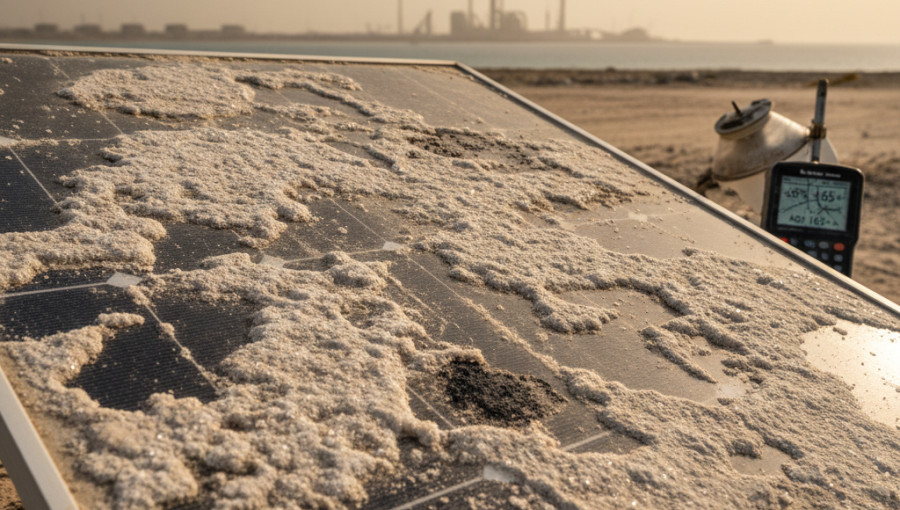A collaborative study by researchers in Saudi Arabia and Egypt has revealed that dust accumulation in arid coastal areas can slash the power output of photovoltaic systems by as much as 48%. The investigation found that naturally occurring local dust, rich in calcium and silica, is the most damaging. High humidity typical of coastal regions significantly worsens the problem, transforming loose dust into a hard, cemented layer on solar panel surfaces, which severely impairs their performance and is difficult for natural elements like wind to remove.
The research, led by a team from Saudi Arabia’s Imam Abdulrahman Bin Faisal University with partners from Egyptian institutions, was conducted in Jubail, a hot desert city on the Persian Gulf coast. The scientists experimentally applied four different types of dust—kaolinite, bentonite, montmorillonite, and natural dust collected locally—to a polycrystalline solar panel to measure their impact on energy generation. The natural dust proved to be the most detrimental, causing the most significant power loss due to its high concentration of silica (25.37%) and calcium oxide (30.52%), which scatter light and form an adhesive bond with the panel surface.
Humidity was identified as a critical factor that amplifies the negative effects of soiling. The study noted that when relative humidity surpassed 60%, the efficiency drop accelerated by 15-30%. At this threshold, capillary forces bind the dust particles to the photovoltaic surface, creating a cemented layer that resists natural cleaning by wind. This effect was particularly pronounced with calcium-rich dust. Consequently, the team observed that the panels performed best during the low-humidity morning hours, with efficiency losses of 20-25% occurring in the more humid afternoons.
The composition of the dust also played a distinct role in the type of performance degradation. While natural dust primarily blocked light, montmorillonite, which has a high iron content of 62.67%, caused thermal degradation. It raised the solar panel’s surface temperature to 40.4°C, leading to a reduction in the open-circuit voltage. Furthermore, the study established a strong correlation between poor air quality and reduced panel efficiency. When the Air Quality Index (AQI) exceeded 160, the combined effect of airborne particles and surface dust cut conversion efficiency to below 10%.
Based on these findings, the researchers suggest that solar farm operators in arid coastal regions can develop more effective maintenance strategies. For example, areas with calcium-rich dust could benefit from hydrophobic coatings to prevent moisture-driven adhesion, while regions with high iron content in the dust might require thermal-resistant materials. This tailored approach could optimize cleaning schedules and improve the long-term performance of solar installations in these challenging environments.

